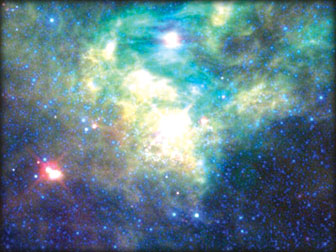Collision of galaxies formed Andromeda
Astronomers has revealed that Andromeda - the nearest spiral galaxy
to the Milky Way- was born when two smaller galaxies collided.
An international team, who conducted a computer simulation of how
Andromeda evolved over time, suggest that two galaxies collided some
nine billion years ago and permanently fused about 5.5 billion years
ago, reports the BBC.
The lead author, Francois Hammer of the Paris Observatory, France,
said that while scientists have been able to detect galaxies near the
edge of the Universe, there many gaps in our knowledge of our immediate
neighbourhood, known as the Local Group of galaxies.
 |
|
The colours of the
universe |
The Local Group includes some 40 galaxies, of which the biggest are
the Milky Way and Andromeda.
"Many astronomers, especially specialists in this field, thought that
the Andromeda galaxy could be the result of a major merger. However,
this has never been tested and especially dated [until now]," said Dr
Hammer.
The researcher explained that his team's findings had "the potential
to revise all our knowledge about the Local Group - and this may have
also an impact regarding the amount of dark matter in galaxies".
Using a computer simulation, the astronomers were able to reproduce
most of the peculiar properties of the Andromeda galaxy: The large thin
disk including its giant ring of gas and dust, the massive central
bulge, the gigantic thick galactic "disc", and the giant stream of old
stars.
The simulations were run on high performance computers at the
National Astronomical Observatory of China (NAOC) and at the Paris
Observatory.
The scientists used up to eight million particles to simulate stars,
gas, and dark matter.
Dr Hammer said that the study could also provide insights into the
formation of our own galaxy.
"It doesn't mean that the Milky Way could not have been formed this
way - [maybe it has been], but [it would have happened] much earlier,"
he said.
The study has been published in the Astrophysical Journal.
|

